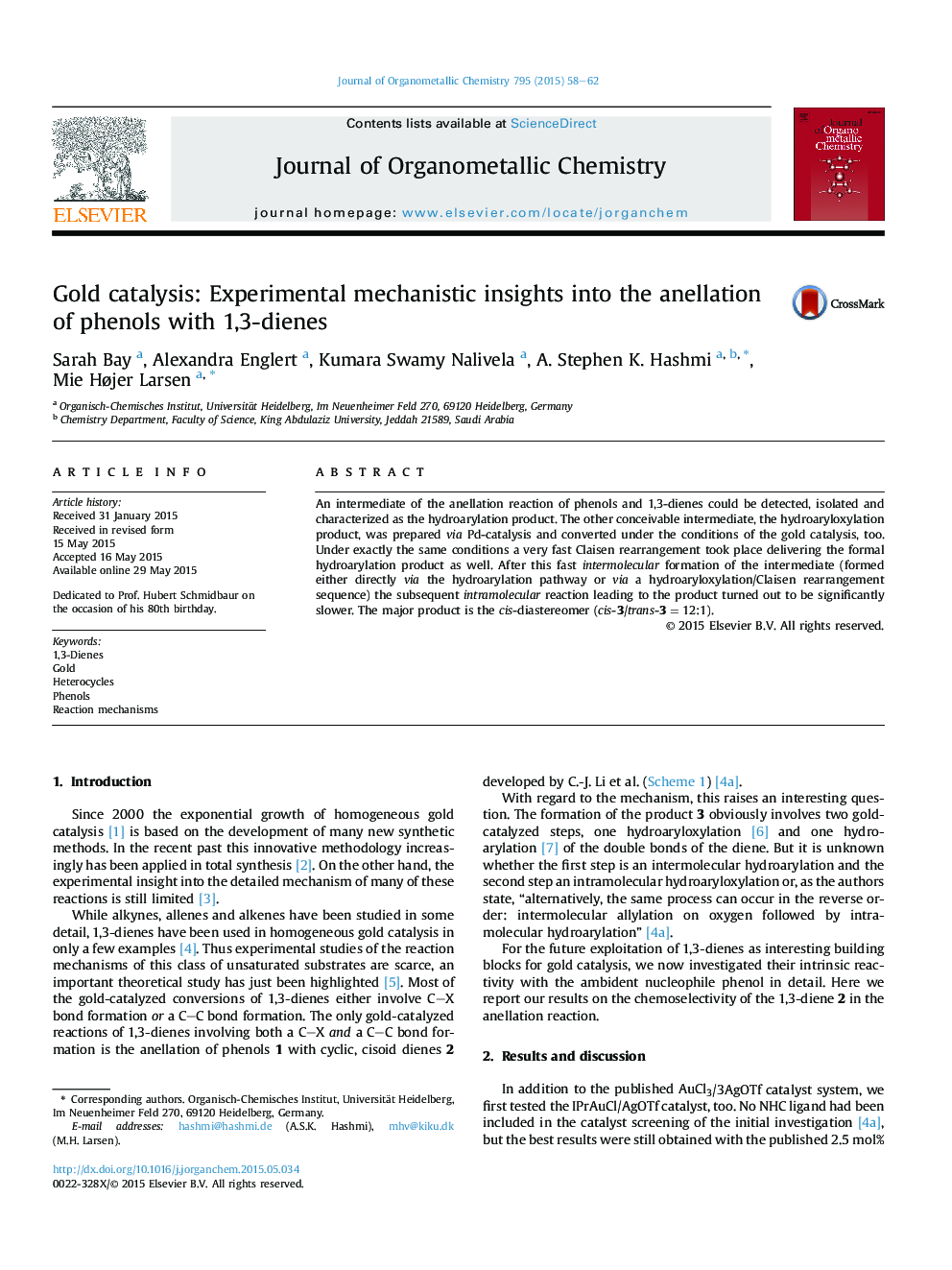| Article ID | Journal | Published Year | Pages | File Type |
|---|---|---|---|---|
| 1323382 | Journal of Organometallic Chemistry | 2015 | 5 Pages |
•An intermediate of the reaction could be isolated.•It could be identified as the hydroarylation intermediate.•The other conceivable intermediate, the hydroaryloxylation intermediate, was prepared by an independent route.•A much slower reaction of the hydroaryloxylation intermediate excluded a significant contribution in the product formation.
An intermediate of the anellation reaction of phenols and 1,3-dienes could be detected, isolated and characterized as the hydroarylation product. The other conceivable intermediate, the hydroaryloxylation product, was prepared via Pd-catalysis and converted under the conditions of the gold catalysis, too. Under exactly the same conditions a very fast Claisen rearrangement took place delivering the formal hydroarylation product as well. After this fast intermolecular formation of the intermediate (formed either directly via the hydroarylation pathway or via a hydroaryloxylation/Claisen rearrangement sequence) the subsequent intramolecular reaction leading to the product turned out to be significantly slower. The major product is the cis-diastereomer (cis-3/trans-3 = 12:1).
Graphical abstractThe intermolecular addition is faster than the intramolecular addition. Experimental studies reveal that the key intermediate can be formed via two different pathways including a fast Claisen rearrangement that enables the interconversion of the two possible intermediates.Figure optionsDownload full-size imageDownload as PowerPoint slide
